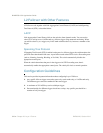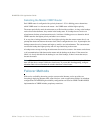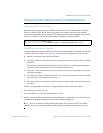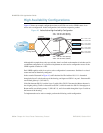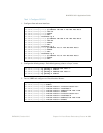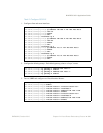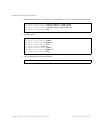
BLADEOS 6.5.2 Application Guide
336 Chapter 24: Virtual Router Redundancy Protocol BMD00220, October 2010
BLADEOS Extensions to VRRP
This section describes VRRP enhancements that are implemented in BLADEOS.
BLADEOS supports a tracking function that dynamically modifies the priority of a VRRP router,
based on its current state. The objective of tracking is to have, whenever possible, the master
bidding processes for various virtual routers in a LAN converge on the same switch. Tracking
ensures that the selected switch is the one that offers optimal network performance. For tracking to
have any effect on virtual router operation, preemption must be enabled.
BLADEOS can track the attributes listed in Table 23 (Router VRRP mode):
Each tracked parameter has a user-configurable weight associated with it. As the count associated
with each tracked item increases (or decreases), so does the VRRP router's priority, subject to the
weighting associated with each tracked item. If the priority level of a standby is greater than that of
the current master, then the standby can assume the role of the master.
See “Configuring the Switch for Tracking” on page 337 for an example on how to configure the
switch for tracking VRRP priority.
Table 23 VRRP Tracking Parameters
Parameter Description
Number of IP interfaces on the switch
that are active (“up”)
tracking-priority-increment
interfaces
Helps elect the virtual routers with the most available
routes as the master. (An IP interface is considered
active when there is at least one active port on the same
VLAN.) This parameter influences the VRRP router's
priority in virtual interface routers.
Number of active ports on the same
VLAN
tracking-priority-increment
ports
Helps elect the virtual routers with the most available
ports as the master. This parameter influences the
VRRP router's priority in virtual interface routers.
Number of virtual routers in master mode
on the switch
tracking-priority-increment
virtual-routers
Useful for ensuring that traffic for any particular
client/server pair is handled by the same switch,
increasing routing efficiency. This parameter
influences the VRRP router's priority in virtual
interface routers.



